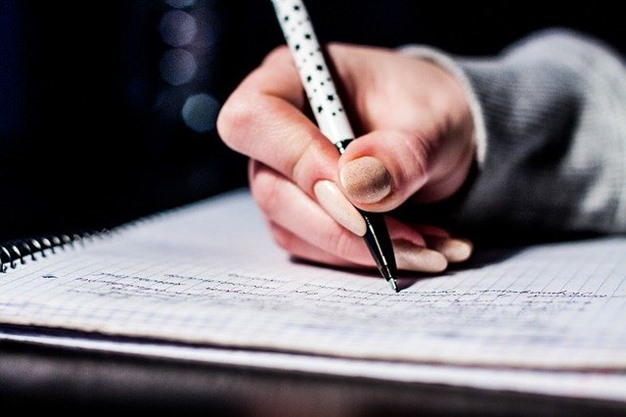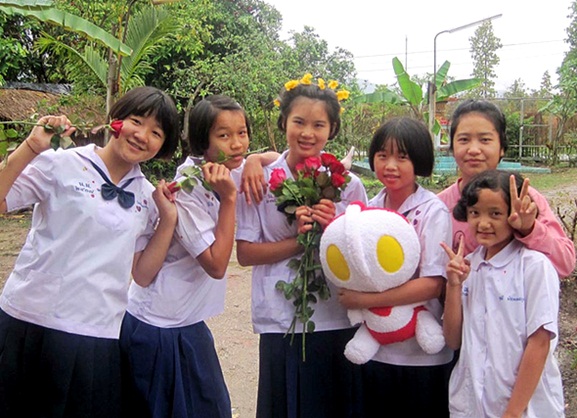
Every year, thousands of westerners move to Thailand to teach EFL (English as a Foreign Language). Once they get here, and get an English teaching job, the next thing they have to worry about is the dress code at their school. Thailand is an extremely hot country and what seems comfortable and professional in most western countries seems out of place and very uncomfortable in Thailand.
Unfortunately, there is a dress code in Thai schools for EFL teachers and most Thai schools are strict. If you’re worried about what to wear to teach English in Thailand, for both men and women, it really doesn’t have to be that difficult. Follow these quick dress code tips and your school will be as happy as a clam with how you look.
Dress Code for Male EFL Teachers in Thailand– A lot of the male teachers complain about the dress code in Thailand and I can certainly sympathize, as it’s incredibly hot, so wearing too much clothing really is a drag. In most Thai schools, you will be expected to wear dress pants (light colors are better than dark as they’re cooler), a long-sleeved shirt (very few schools allow short-sleeved shirts) and a tie.
If you’re going to buy ties in Thailand, don’t buy one of the many 30 baht (80 cent) ties that are available at markets all over Thailand. They’re thin, they look cheap and make any outfit look worse than it should. Splurge a bit and buy a nice tie. Beautiful Thai silk ties can be bought for as little as 200 baht ($6.50) and they’ll really set off your outfit.
As for shoes, you must wear dress shoes (no sandals please). Of course, if it’s more comfortable, you can commute to work in sandals but then change into dress shoes once you get to school. And, of course, socks.
You will be happy to know wearing a jacket isn’t in the dress code although, for special events (religious holidays, parents’ meetings, school concerts) you may have to wear the school jacket. This will probably be provided to you by the school.
Much of these dress code tips probably sound like common sense to many male EFL teachers, but you’d be surprised how some male English teachers dress in Thailand. A lot of the schools have a dress code and then still need to talk to some teachers who want to show up for work in short-sleeved shirts with no tie and sandals.
At the first school I worked at, we even had a ‘teacher’ come to work wearing shorts and a t-shirt and he couldn’t understand why that wasn’t appropriate.

Dress Code for Female EFL Teachers in Thailand – The dress code for female EFL teachers in Thailand is sometimes even stricter than for men. There are basic dress codes that every Thai school will expect their teachers to adhere to, and other schools may have extra rules.
For most female EFL teachers at most Thai schools, you will be expected to wear a skirt as pants are not allowed for women (yes, in some cases, Thailand is still living in the 1930s). A dress shirt is also required although, unlike for the men, most Thai schools allow female EFL teachers to wear short-sleeved shirts. Not too short though and certainly not sleeveless. If you are not sure what type of shirt would be acceptable, I recommend you wear a sleeve length that hits at your elbow or below. That would be professional and not likely to get you into trouble.
As for shoes, most Thai schools expect full dress shoes (not flip flops or sandals), which are incredibly uncomfortable in the heat. Some Thai schools will allow you to wear sandals, but they have to have a strap at the back (ie: not flip flops, even with heels) and are best in muted colors.
Some Thai schools will, unfortunately, require you to wear a uniform and you will be expected to pay for it. At my first school, we had to wear a uniform shirt (blue checked) and a navy blue skirt. For special occasions, we wore a navy blue blazer with the school crest on it. I hated the uniform as it was unflattering and uncomfortable and one of the reasons why I eventually resigned from the school. Thailand is too hot to be that uncomfortable for most of the week.
Finally, make sure you wear a padded bra as having nipples that are visible is a no-no all over Thailand and will not be tolerated in a Thai school.
Special Dress – Many Thai schools now require a special dress code several days a week. Monday is the day to celebrate the King of Thailand and a lot of Thai schools expect their teachers to wear a yellow air-tex shirt that is available all over Thailand. I didn’t mind wearing it as they’re only 200 baht ($6.50) are comfortable as they’re short-sleeved and airy, and the yellow color was nicer than the blue uniform we normally had to wear.
On Wednesdays was “Thai Day”, so every Wednesday we had to wear something Thai – a traditional Thai dress, traditional Thai skirt and blouse, a blue cotton Thai ‘peasant’ shirt and the men had to wear Thai shirts or mor hom (traditional Thai indigo blue shirts). Friday was ‘Casual Day’ but in Thailand, casual day does not equate to jeans.
I got into trouble at my first Thai school when they instituted Casual Day as I wore jeans and a t shirt, which were being worn by all the students that day. Apparently, in Thailand jeans are fine for the kids but not for the teachers (although sweat pants were fine – go figure!).
Overall, it’s not that difficult to dress appropriately to teach in a Thai school and you’ll get used to the restrictions. Just get an idea of the dress code before you start working there and adhere to it as much as possible. As time goes on, you’ll be able to figure out what parts of the dress code are written in stone and which aren’t, and adjust what you wear accordingly.
In Thailand though, what you wear is extremely important as, the better you look, the more respect you will get and the better you will be treated. So, you might as well accept it and join in.



